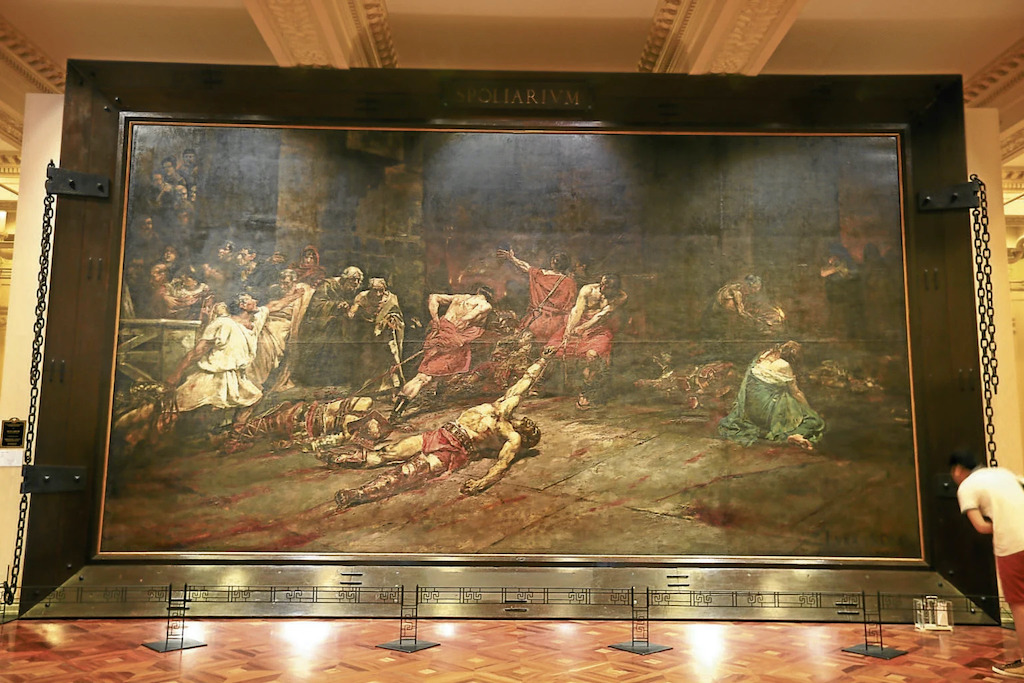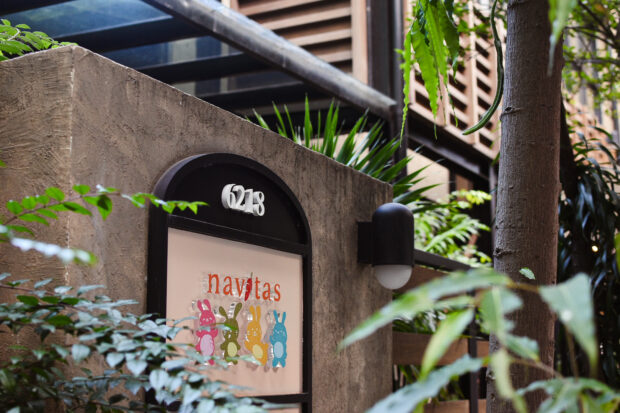The unearthing and subsequent display of “Hymen, oh Hyménée!,” a 19th-century painting by artist Juan Luna opens a necessary discussion about who owns art.
Completed between 1886 and 1887, the painting won a bronze medal in a Spanish contest where the Filipinos, including Luna, won silver and gold medals. Luna kept the painting until his death in 1899. It later resurfaced in Spain in 1920, kept by an aristocratic family. Attempts were made to purchase it in the 1970s and 1990s to no avail.
[READ: Juan Luna’s long lost masterpiece is making its debut. Here’s how you can see it for free]
Filipino private collector and León Gallery founder Jaime Ponce de Leon finally purchased it from the family in 2014, authenticating and verifying it before shipping it home in 2017.
León Gallery is an auction house focusing on historical pieces.

The painting is currently on display at the privately-owned Ayala Museum, on a loan from Ponce de Leon for three years.
Today, many classic works are kept in private collections, but as art pieces also serve as markers of a people’s heritage, memory, and identity, this begs the question: Should such a public good stay solely in private hands?
Nolisoli spoke with Gio Caliguia, a former art division researcher for the National Museum now teaching history and Philippine Studies at the Polytechnic University of the Philippines. Caliguia also worked in the private sector as an art researcher for the auction house Casa de Memoria.
Keepers of memory
Caliguia gave two (of many) definitions of art. First, there’s the contemporary view brought about by cultural shifts following the Industrial Revolution and the rise of modern capitalism, which sees art as an asset class, tying the value of a work to its market value and return-of-investment when resold.
Then there’s art as situated in a community, defined by a community. A piece, artifact, tradition, or custom may be related in a way that aligns with the modern, capitalist definition of art above, largely held by western establishments. Here, art represents a community’s memory, values, and identity.
“Artists only started to sign their works around the Industrial Revolution, when art started to commercialize,” Caliguia said. Here, an artist’s signature essentially became a form of branding. Caliguia contrasted this to how some old masters rarely signed their works. He also cited how signatures taking prominence subsequently led to new types of forgeries.
That’s one of the paradoxes of the art world. When you privatize a piece, you also hide it from the public.
Gio Caliguia, Lecturer, history and Philippine Studies, Polytechnic University of the Philippines
Caliguia believes that museums can “try to frame what your country’s identity is.” National treasures align with art’s communal definition outlined above. One role of museums—public institutions in contrast to galleries whose primary aim is to sell—could arguably be that of preservers of a people’s memory.
“That’s one of the paradoxes of the art world in modern times,” Caliguia argued, “that a piece becomes art if it’s visible to the community. That’s what makes art: visibility. The irony is when you privatize a piece, you also hide it from the public.”

And yet, he also recognizes that “when you privatize art, you’re also saving it. But you’re also losing the essence of art being a public good, [you’re also losing] public ownership of the work.”
He continues, “the private ownership of public art is symptomatic of art’s commercialization. Capitalism tends to explain and rationalize itself. Privatizing a piece is now being legitimized as a means for protecting and preserving it.”
“The National Museum of the Philippines doesn’t have enough funding to acquire important works,” he recalled, citing guidelines set by the International Council of Museums (ICOM) with regard to managing collections and documenting pieces.
He adds that the directives of national cultural institutions already gear towards ICOM standards but funds are lacking amidst internal politicking. When he worked in Casa de Memoria, Caliguia revealed that “my counterparts from [public institutions] would say that I was lucky to practice actual conservation.”
The power of art
“In a country with a tumultuous political climate,” Caliguia warned, “cultural institutions are at risk of being defunded, for example, if an administration doesn’t want the people to remember their history.”
Caliguia cites how following the 2022 presidential elections, the digital archives from the Presidential Museum and Library disappeared together with records of the martial law era. The administration claimed that the pages went down “for maintenance” but it’s 2023 and the site has yet to resurface.
“We’re now devoid of the tools to do fact-checking ourselves,” the lecturer lamented. He also noted that “corruption affects how art is presented, how it is made accessible and available. Art can be used by authoritarian regimes to establish narratives.”
[READ: Stop saying that artists thrived during martial law]
He concludes that “sometimes it’s not even about the art or artist, but the influence, wealth, and power of the current owner of an old work. It may just be a lifeless painting, but there are threads of power surrounding it.”
Given the Philippine context in terms of funding and conservation capabilities, in essence, the transmission of memory, Caliguia can only “hope that more in the private sector would open their collections for the people to access.”
He noted how art being untaxed yet relatively liquid—the perfect asset and investment–plays a part in why some wealthy collectors hide their collections.
“Some of the collectors I’ve worked with have that idealistic view,” he recalled, “‘I collect for the Filipino people.’ Some will build museums. That’s one possibility for art collectors, to see a larger vision. You’re the ones literally capable of preserving these pieces.”
The government in turn “can help in creating conditions for enticing private collectors to open up and share their collections. We need to democratize access to art.”
Caliguia is also critical of the language used in communicating art and the spaces where they’re in. Often highfalutin and overly academic, he contrasted this to “Europe, [where] the art pieces are closer to everyday people, in parks, for example. Ordinary people there understand, “this is art” because it’s closer to them.”











































